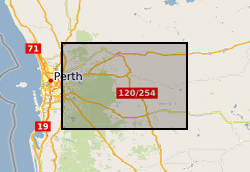Carboniferous
Type of resources
Available actions
Topics
Keywords
Contact for the resource
Provided by
Years
Formats
Representation types
Update frequencies
Scale
Resolution
-

This dataset represents the thickness in metres of the early Carboniferous limestone (ECL) over the Northern and Southern Provinces in Great Britain. The layer may be used to identify prospective geothermal heat resources, such as areas with deep burial depths beneath thick Permian-Mesozoic sequences, as in the Cheshire Basin, and the flanks of the East Irish Sea and Southern North Sea basins; or beneath thick later Carboniferous strata, as in the Stoke-on-Trent area.
-

Register of samples collected from the Carboniferous of southern Ireland together with the Hodson collection. Specimen number, locality and geological horizon given together with some identifications.
-

This raster dataset shows the modelled P50 distribution of the theoretical potential 'heat-in-place' (HIP) across the northern and southern early Carboniferous limestone in Great Britain (PJ / km2), at a resolution of 2500 m x 2500 m. The HIP is calculated for resource temperatures greater than 50 degrees Celsius, which represents the minimum temperature required for direct use of heat from hot sedimentary aquifer resources. The HIP characterises the heat resource available in an aquifer according to the USGS definition described in e.g. Muffler and Cataldi (1978). Its calculation is part of the research published by D J.R. Jones, T. Randles, T. Kearsey, T.C. Pharaoh, A. Newell (2023). https://doi.org/10.1016/j.geothermics.2023.102649. Areas of high uncertainty are delineated in the published paper.
-

Samples from Scotland collected for A. Strank's PhD. Arranged by collectors' number (ARE and HR).
-

This raster dataset provides the modelled temperature at the top of the early Carboniferous limestone (ECL) in the Northern and Southern provinces in Great Britain. The data were created by D J.R. Jones, T. Randles, T. Kearsey, T.C. Pharaoh, A. Newell (2023). https://doi.org/10.1016/j.geothermics.2023.102649
-

This vector contour dataset represents the temperature distribution in the Carboniferous Fell Sandstone Formation (Mid Border Group), at the mid reservoir depth, in the Northumberland-Solway Basin.
-

All paleointensity data gathered from the project at University of Liverpool. The data is divided into multiple four letter coded sections which refer to a specific locality and/or experiment type. The sections are as follows: CFEH - Thermal paleointensity experiment on natural clinkers from Montana, USA, looking primarily at the Epsilon Hematite phase, with an additional high-power alternating field demagnetisation step after each infield step of the experiment. LPRM - volcanic material from Kinghorn and Wormit Bay, Scotland (335 and 410 million years old). This was a specific experiment with samples given a prior high temperature applied field of 80 micro Tesla and a pressure remanent magnetisation of 80 micro Tesla. VFSS – a microwave paleointensity experiment carried out on Scottish vitrified fort material, sampled in the 1980s. WTBY – microwave paleointensity experiments carried out on Scottish volcanics from Wormit Bay. Sampled September 2015. YDSR – volcanics from Yandiniling Dike Swarm, in Yilgarn Craton, Australia, 2.6 billion years old. Sampled Nov 2018. Sampled with Yebo Li from the University of Curtin (Perth) as part of a collaboration, resampling of 16WDS sites from his palaeodirections paper. These were microwave demagnetisation (specimen orientation only) and paleointensities. NERC grant NE/P00170X/1.
-

This dataset represents the thickness in metres of the Carboniferous Fell Sandstone Formation (Mid Border Group) in the Northumberland-Solway Basin.
-

This raster dataset represents the depth in metres to the top of the early Carboniferous limestone (ECL) over the Northern and Southern Provinces in Great Britain. The raster grid is provided at a 2500 m resolution. The layer can be used to identify prospective geothermal heat resources, such as areas with deep burial depths beneath thick Permian-Mesozoic sequences, as in the Cheshire Basin, and the flanks of the East Irish Sea and Southern North Sea basins; or beneath thick later Carboniferous strata, as in the Stoke-on-Trent area.
-

Rock magnetic data corresponding to demagnetisation (LIV_DEMAG) and paleointensity (LIV_PI) data submitted as part of this grant. This data is divided into two subfolders, "Kappabridge" and "VFTB", corresponding to the instrument used to acquire the data. Those folders each contain one or more folders labelled with a four letter code, corresponding to a specific locality and/or experiment type, matching the letter codes in LIV_DEMAG and LIV_PI. The Kappabridge folders then contain raw data files of temperature-dependent magnetic susceptibility, and the VFTB folders contain raw data files of hysteresis, coercivity, isothermal remanent magnetisation and thermomagnetic curve measurements. CFEH corresponds to clinker samples from USA attempting to isolate an Epsilon Hematite phase. LPRM are data from Kinghorn and Wormit Bay volcanics in Scotland, ~330 Ma, specifically for samples given a lab TRM at 80uT and a PRM at 80uT. WTBY are Devonian volcanics from Wormit Bay, sampled in 2015. YDSR are data from Yandiniling Dike Swarm, Yilgarn Craton in Australia, sampled Nov 2018.
 NERC Data Catalogue Service
NERC Data Catalogue Service